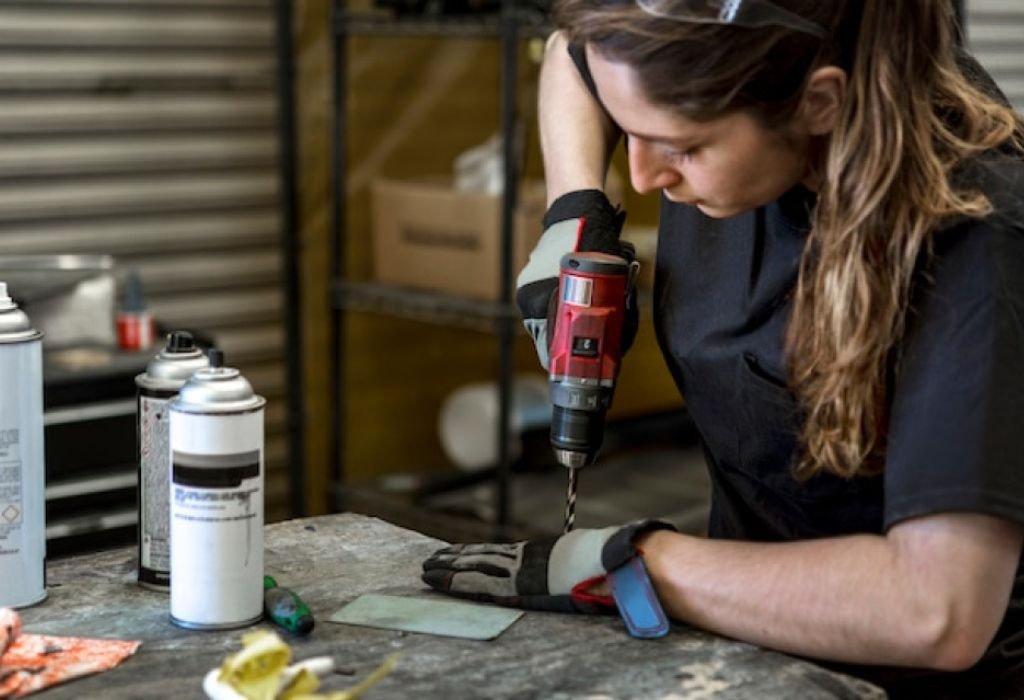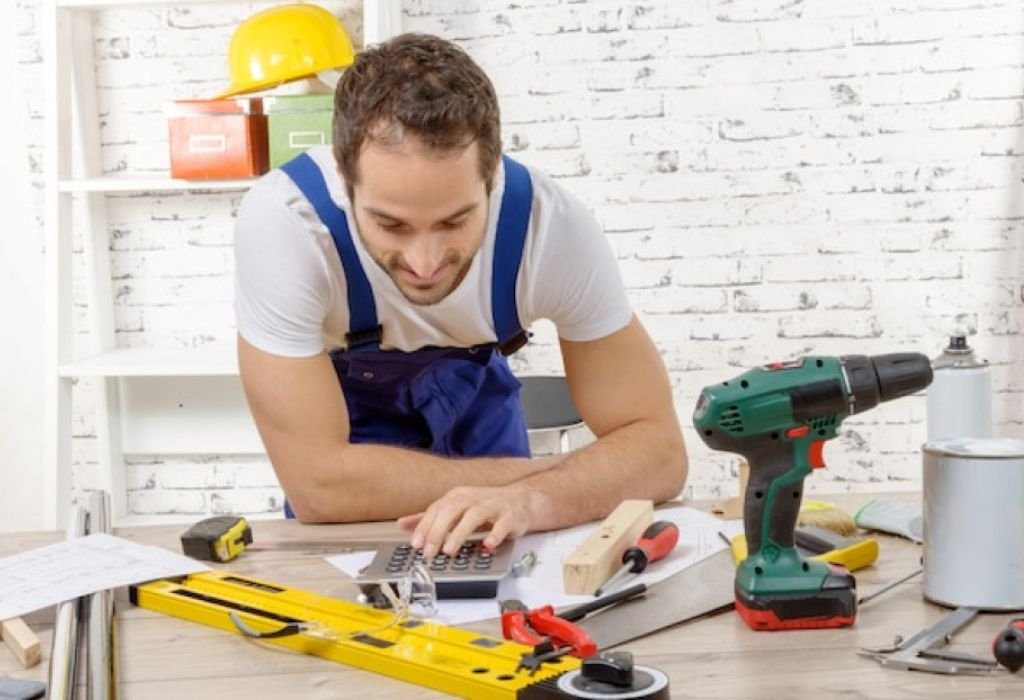A stubborn bolt that refuses to budge can quickly turn a simple project into a frustrating challenge.
Many people reach for an impact driver, only to wonder how sockets can be used effectively without damaging tools or fasteners.
The right knowledge can transform this problem into a simple task.
Impact drivers are designed to deliver high torque in short bursts, making them powerful allies for fastening and loosening jobs.
However, using the wrong socket or adapter can lead to stripped bolts, cracked sockets, or even injuries.
This is where understanding the correct process becomes essential for both efficiency and safety.
Research shows that hand and power tool injuries account for thousands of emergency visits each year, with many cases caused by improper tool use source.
On the other hand, industry studies highlight that using the correct socket type can extend tool life by over 30% source. These numbers show that safety and performance go hand in hand.
Readers who learn how to use sockets on an impact driver properly gain three major benefits: saving time, preventing costly mistakes, and protecting themselves from injury.
From choosing the right adapter to recognizing impact-rated sockets, each step builds confidence for tackling projects at home or on the job.
This guide breaks down everything you need to know, from the differences between socket types to the techniques that keep your tools performing at their best. By the end, you will see how a simple adjustment can make your impact driver more versatile and reliable for any fastening task.
What an Impact Driver Does vs an Impact Wrench

An impact driver is built for driving screws and smaller fasteners with bursts of rotational force. It works with a 1/4-inch hex shank and is compact for tight spaces.
An impact wrench, on the other hand, is designed to loosen and tighten larger nuts and bolts with much higher torque. It typically uses 3/8-inch or 1/2-inch square drives for sockets.
Impact drivers usually deliver torque measured in inch-pounds, ranging around 1,500–1,800 in-lbs in modern models source. Impact wrenches often provide torque in foot-pounds, exceeding 200–400 ft-lbs for tougher automotive or industrial work.
Understanding these differences helps users choose the right tool, preventing damage to sockets or fasteners when applying too much or too little force.
Can an impact driver spin sockets?
Yes, when paired with a proper hex-to-square drive adapter.
Why is torque listed in inch-pounds for drivers?
Impact drivers use inch-pounds, while wrenches use foot-pounds to reflect their higher power levels.
Is an impact driver enough for seized bolts?
Usually not, because it lacks the breakaway torque of an impact wrench.
What torque range covers most driver tasks?
Around 1,500–1,800 in-lbs is ideal for general fastening and light socket use.
When should you choose an impact wrench over a driver?
For automotive lug nuts, rusted bolts, or heavy-duty fastening where extra torque is required.
The Right Sockets: Impact-Rated vs Regular
Impact-rated sockets are designed with thicker walls and tougher alloys to withstand repeated hammering. Standard chrome sockets, though cheaper, can shatter under impact force.
Impact sockets are usually made from chrome molybdenum steel with a black oxide finish. This combination resists vibration, absorbs shock, and prevents cracks better than chrome vanadium sockets.
Choosing between deep and shallow sockets depends on access needs. Deep sockets work well for recessed fasteners, while shallow sockets are better for tight spaces.
A six-point socket grips flat sides of a nut, reducing rounding under high torque. Twelve-point sockets provide easier alignment but are less durable for impacts.
Can regular sockets be used on an impact driver?
It is not recommended; use impact-rated sockets for shock loads and safety.
What are impact sockets made from?
Commonly chrome molybdenum with a black oxide finish.
Why are impact sockets thicker?
They absorb hammer blows and resist cracking under vibration.
When to pick 6-point over 12-point?
Use 6-point to reduce rounding under high torque.
Are deep sockets better for impact use?
Yes, they reach studs and recessed bolts effectively.
How to Use Sockets on an Impact Driver (Step-by-Step)
First, select the correct size impact socket for the fastener. Using the wrong size risks stripping or rounding.
Attach the socket to a hex-to-square adapter designed for impact use. Ensure the detent pin or retaining ring locks the socket securely in place.
Align the socket with the fastener and keep the driver steady. Start at a low speed to prevent cam-out, then gradually increase RPM as the socket seats.
Apply steady pressure and allow the impact mechanism to do the work. Do not over-tighten, as impact drivers are not calibrated like torque wrenches.
What adapter is needed?
A hex-to-square socket drive adapter rated for impacts.
How to avoid slippage?
Use the correct socket size and maintain straight alignment.
Do deep sockets help?
Yes, they reach recessed fasteners and studs.
Should speed be full trigger?
Start slow, then increase RPM once seated to prevent cam-out.
How to prevent over-tightening?
Finish tightening with a torque wrench for accuracy.
Safety First: PPE, Inspection, and Retention
Impact sockets can fly off under vibration if not secured. Always use detent pins, O-rings, or retaining rings to prevent accidents.
Eye protection is non-negotiable. Studies show that 90% of eye injuries are preventable with proper safety glasses source.
Inspect sockets and adapters for cracks before every job. Even small fractures can expand under impact and cause failure.
Gloves with vibration resistance improve control and reduce fatigue. Hearing protection is also advised during long sessions.
What PPE is essential?
Safety glasses are mandatory and prevent most injuries.
How to keep the socket from flying off?
Use detent pins or retaining rings and verify engagement.
When to replace a socket or adapter?
At the first signs of cracks, rounding, or excessive wear.
Gloves or no gloves?
Use non-slip, vibration-resistant gloves for control and comfort.
Is hearing protection necessary?
Yes, prolonged exposure to impact noise can cause hearing damage.
Choosing Drive Sizes, Adapters, and Accessories

Impact drivers use 1/4-inch hex outputs, so adapters are essential to attach sockets. The most common adapters convert to 1/4, 3/8, or 1/2-inch square drives.
Extensions allow reaching recessed bolts, while wobble joints provide access to angled fasteners. Always choose impact-rated accessories to prevent breakage.
Avoid stacking multiple adapters, as this weakens torque transfer. For heavy-duty jobs, consider moving up to a dedicated impact wrench.
Which drive size suits an impact driver best?
Start with 1/4 or 3/8-in through adapters; 1/2-in is possible but loads rise.
Are universal joints safe on impacts?
Use impact-rated joints and avoid extreme angles.
Can extensions reduce power?
Yes, longer stacks add flex and can soak up impact energy.
When to switch to an impact wrench?
When fasteners are rusted or require high breakaway torque.
Do cheap adapters last?
Non-impact adapters often fail quickly under load.
Technique Tips for Tight or Rusted Fasteners
Stubborn bolts benefit from a quick spray of penetrating oil before using an impact driver. Letting the oil soak reduces friction and helps loosening.
Pulse the trigger instead of holding it continuously. This keeps the socket seated and allows impacts to break the fastener free.
For heavily corroded bolts, pre-breaking with a hand wrench may prevent adapter failure. This reduces stress on the impact driver.
Keep the socket square to the fastener. Angled pressure increases the risk of rounding.
Will more torque always help?
Control and technique often beat raw torque on small hardware.
Should penetrating oil be used first?
Yes, it reduces friction and helps shock loosen threads.
Can the adapter break?
Yes at high loads; use impact-rated adapters and moderate the speed.
Is pre-breaking by hand useful?
Yes, it reduces shock and prevents rounding.
Should rusted bolts be heated first?
Heat expansion can help, but use caution near sensitive materials.
Socket Types That Matter: Deep, Shallow, 6-Point, 12-Point, Thin-Wall
Deep sockets are ideal for wheel studs and recessed nuts. Shallow sockets fit better in tight clearance areas.
Six-point sockets distribute force across flat sides, while twelve-point sockets engage more quickly but risk rounding under heavy torque.
Thin-wall sockets are designed for alloy wheels or tight gaps. Always use impact-rated versions to prevent breakage.
Color-coded rings or laser-etched sizes improve speed and organization when working with multiple sockets.
When to use deep sockets?
Use deep sockets for studs and recessed nuts.
Are thin-wall impact sockets safe?
Yes, if impact-rated, they provide clearance without breaking.
Is 12-point OK on impacts?
Prefer 6-point for high torque and minimal rounding.
Do color bands matter?
They aid size identification; durability still depends on Cr-Mo build.
Are shallow sockets useless?
No, they are excellent for confined spaces.
Tuning Your Impact Driver: Speed, Modes, and Power
Most impact drivers offer multiple speed settings. Start with low or medium for control, then use high speed for tougher fasteners.
Pulsing the trigger in short bursts helps keep the socket aligned and prevents cam-out. LED lights on newer drivers improve accuracy in dark spaces.
Battery size matters. Larger batteries hold voltage under load, reducing bogging and extending runtime.
Which mode for nuts and bolts?
Use medium mode to balance control and power.
Is trigger pulsing helpful?
Yes, it keeps the socket seated while shocks work the fastener.
Do LED lights matter?
They improve alignment in low-light spaces.
What about battery size?
Larger packs hold voltage under load and reduce bogging.
Does higher RPM equal more torque?
Not always; torque comes from impact force, not just speed.
Maintenance: Care for Sockets, Adapters, and the Driver

Clean sockets regularly to remove dirt and debris. Dust buildup can interfere with engagement.
Inspect adapters for cracks or bending after heavy use. Replace any worn accessories immediately.
Apply a light oil to moving parts, but keep hex shanks dry to prevent slipping. Store sockets on rails to avoid mixing sizes.
How often to inspect sockets?
Before each use and after high-load jobs.
Can impact sockets rust?
Black oxide resists corrosion but still needs dry storage.
Grease or oil the adapter?
A light oil prevents galling, but keep the hex clean.
Store deep and shallow how?
Use size rails to avoid mix-ups and dings.
Can cracked sockets be repaired?
No, replace them immediately to avoid accidents.
Common Mistakes to Avoid
Many beginners use standard chrome sockets on impact drivers. This risks dangerous shattering and injuries.
Failing to secure sockets with detent pins or rings can send them flying across the work area. Always double-check engagement.
Over-tightening fasteners with an impact driver can damage threads. Use a torque wrench for final tightening.
Skipping PPE is another frequent mistake. Proper gloves and safety glasses prevent most injuries.
Biggest beginner error?
Using standard sockets under impact loads.
Why do sockets fly off?
Improper detent engagement or worn retaining hardware.
How to stop rounding?
Use 6-point impact sockets and keep alignment straight.
Is overtightening common?
Yes, so finish to spec with a torque wrench.
Is PPE optional for short jobs?
No, safety gear is essential regardless of job length.
Quick Buying Guide and Setup Kit
A good starter kit includes a set of Cr-Mo impact sockets, hex-to-square adapters, and a reliable impact driver with multiple speed modes.
Look for sets with both deep and shallow sockets. This ensures coverage for common automotive and household fasteners.
Avoid mixing regular sockets with impact use. Spending slightly more upfront prevents costly tool damage later.
Which socket set type for impacts?
Cr-Mo impact set with 6-point sockets in common sizes.
Which adapters to own?
1/4-hex to 1/4, 3/8, 1/2-in square drive adapters.
Are deep sets needed?
Yes for studs and wheel lugs with long threads.
Do brand kits matter?
Pick impact-rated, tested products over bargain non-impact sets.
Is a compact set enough?
Yes for DIY, but pros benefit from full metric and SAE ranges.
Conclusion
Learning how to use sockets on an impact driver safely saves time, prevents damage, and improves results. Choosing the right sockets, adapters, and protective gear ensures efficiency without sacrificing safety.
By applying proper techniques and avoiding common mistakes, anyone can transform their impact driver into a versatile tool for both light and heavy fastening tasks. Always finish with a torque wrench, inspect gear before use, and prioritize safety every time you work.

I’m John F. Nicholas, the founder, lead writer, and drill enthusiast behind 101drill.com. With years of hands-on experience in power tools and DIY projects, I created this platform to share practical knowledge, expert tips, and real-world insights to help others master the art of drilling.
